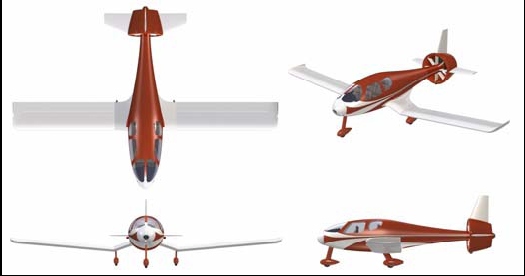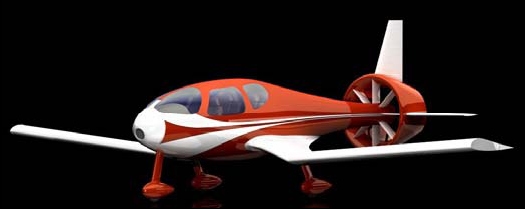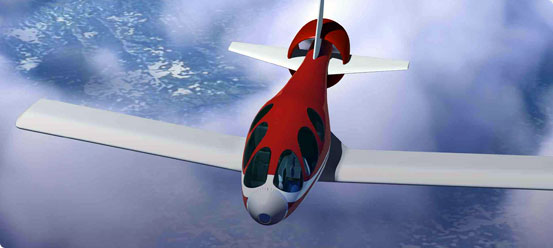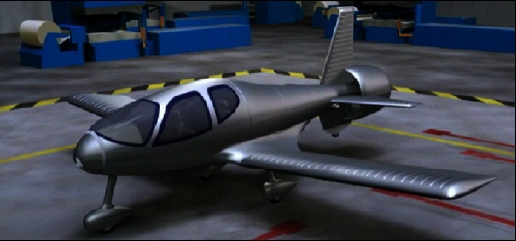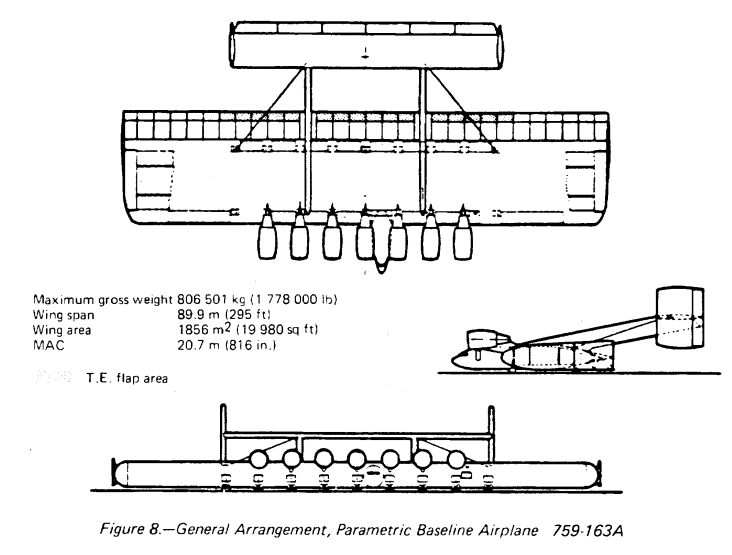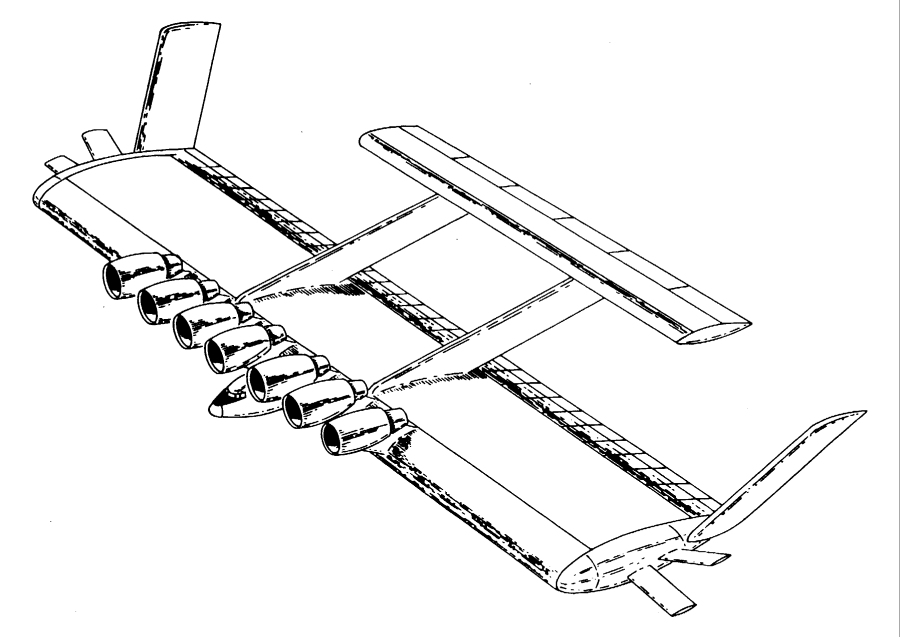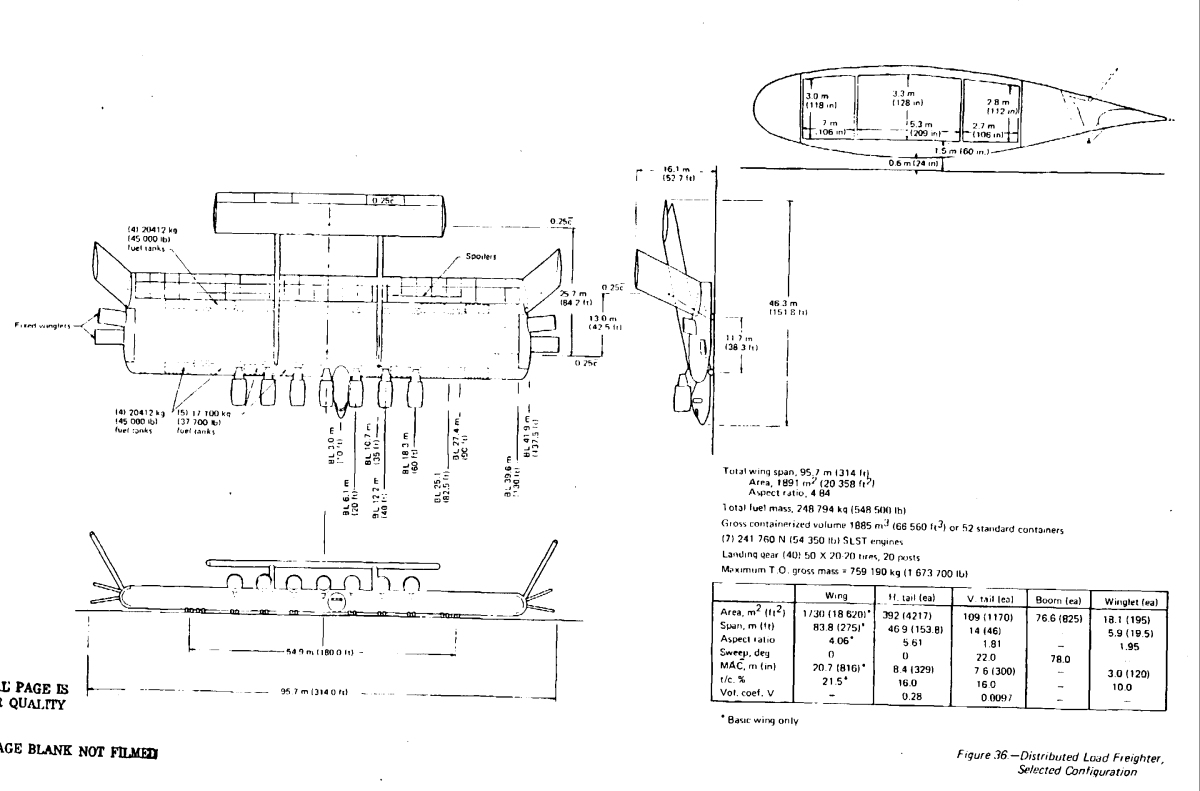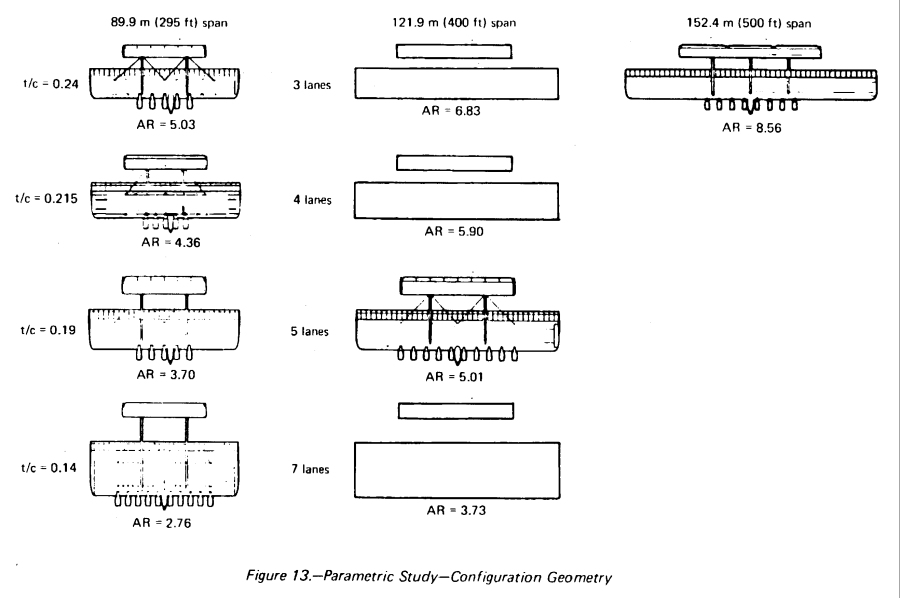A “Personal Air Vehicle” (PAV) from NASA_Langley, circa 2003-2005. Yet another in a long line of designs that would, it was hoped, bring Flight To The Masses. Regardless of the technology of the aircraft, though, there will always be one major impediment to Flight For The Masses within the United States… the FAA. As anyone with even a slight medical issues (such as me with my asymptomatic Type 2 Diabetes) can usually attest, the FAA is not exactly interested in the filling the sky with pilots.
This particular PAV concept used a mid-mounted engine with a long drive shaft to power an aft fan. The idea was to create a vehicle with certain capabilities, acronymed EQuiPT (Easy-to-use, Quiet, Personal Transportation). An automotive engine coupled with a shrouded fan would, hopefully, produce a relatively simple and easy to maintain design with minimum noise.
• Length: 8.08 m (26.5 ft)
• Height: 3.29 m (10.8 ft)
• Wing Span: 11.89 m (39.0 ft)
• Wing Area: 15.10 m^2 (162.5 ft^2)
• Cabin Length: 2.53 m (8.3 ft)
• Cabin Width: 1.40 m (4.6 ft)
• Cabin Height: 1.22 m (4.0 ft)
• Cabin Volume: 3.91 m^3 (138.0 ft^3)
• Gross Weight: 1633 kg (3600 lb)
• Empty Weight: 1111 kg (2450 lb)
• Useful Load: 522 kg (1150 lb)
• Fuel Capacity: 322 l (85 gal)
• Engine: Chevrolet LS-1 V8
• Power: 224 kW (300 hp)
• Cruise Speed: 302 km/hr (163 kts)
• Cruise efficiency: 5.4 km/l (11.1 nm/gal)
• Cruise Fuel Flow: 55.3 l/hr (14.6 gal/hr)
• Landing Speed: 96 km/hr (52 kts)
• Landing Gear: Fixed Tricycle
NASA continues to study the PAV idea.
And yes, the pics are small and crappy.
Read nothing more about PAVs in the latest Issue of Aerospace Projects Review!
